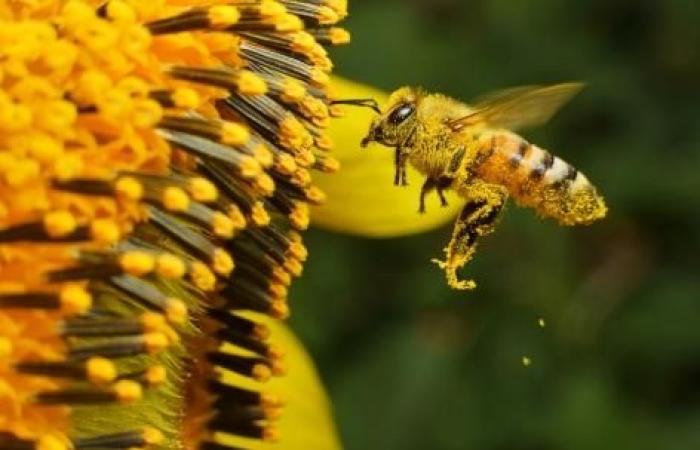“Insects have an incredible sense of smell, just like dogs“, explains Professor Debajit Saha of Michigan State University. And this ability is particularly interesting in the fight against cancer. The scientist and her team discovered that bees were capable of “smelling” lung cancer. Their discovery was published in the journal Biosensors and Bioelectronics.
Lung cancer: bees detect small concentrations of biomarkers
To determine whether bees had the ability to detect cancer biomarkers when in contact with a human’s breath, researchers developed a “recipe” to synthetically recreate the chemical composition of a person’s breath suffering from lung cancer as well as healthy breath. They then installed an electrode on the brains of 20 bees to observe changes in their brain signals. The tests confirmed that there was a neuronal response when they were brought into contact with the odors created.
The scientists then wanted to measure the amount of cancer indicator compounds that needed to be present in a person’s breath for the insect to detect lung cancer. “The bees detected very small concentrations: it was a very good result.”, explains Professor Debajit Saha in a press release. “Bees can differentiate minute changes in the chemical concentrations of the respiratory mixture, which are in the parts per billion range (measure of concentration: cubic millimeter per cubic meter).”
Furthermore, the brain data collected made it possible to identify several different neurons in the bee brains. “which clearly differentiated between lung cancer synthetic breath and healthy breath.”
Bees can differentiate lung cancers
Secondly, the team sought to determine whether bees could detect cancer biomarkers in cultures of human lung cancer cells. For this experiment, insects with the electrode measuring their brain waves were brought into contact with different types of samples placed in closed, airtight vials. The researchers showed that the use of this sensor based on the bee brain makes it possible to distinguish cells from small cell lung cancer from those from non-small cell lung cancer or from people in good health.
“What is amazing is the ability of bees not only to detect cancer cells, but also to distinguish cell lines of different types of lung cancer”explains Autumn McLane-Svoboda, who worked on this project. “The future implications of this are huge, as our sensor could enable patients to quickly receive specific cancer diagnoses, which is imperative for correct treatment pathways.”
Faced with these different results, Professor Saha’s team plans to develop a non-invasive test that requires patients to breathe into a device equipped with a sensor based on the brains of bees. The latter would analyze breathing and report in real time if cancerous chemicals are present.






